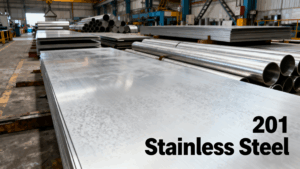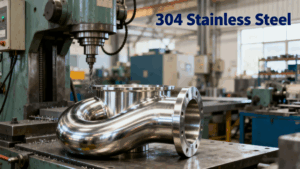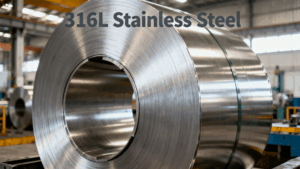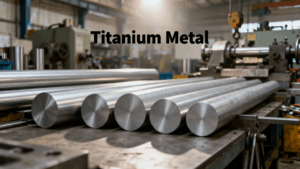It’s more important to choose the right material than to believe what the ads say. It changes how resistant it is to corrosion, how heavy it is, how much it costs, how safe it is for food, and how long it keeps heat or cold. This page talks about the four materials Diller uses or offers for insulated water bottles: 201 stainless steel, 304 stainless steel, 316L stainless steel, and titanium. It also compares their pros and cons and tells buyers what they should check before placing an order. The tone is meant to be neutral and practical so that procurement teams and product managers can make decisions based on facts, not hype.
Quick summary
-
201 stainless steel — lowest cost, lower corrosion resistance; OK for low-risk everyday use but less ideal with salty/acidic drinks.
-
304 stainless steel (18/8) — industry workhorse: good corrosion resistance, affordable, common in consumer bottles.
-
316L paslanmaz çelik — better corrosion resistance (molybdenum alloy), preferred for marine/acidic exposure and premium bottles; easier to pass strict food-contact tests.
-
Titanium — light, highly corrosion-resistant and biocompatible; premium and niche due to higher cost and more difficult fabrication.
What each material means in real life
201 stainless steel is cheap but doesn’t resist corrosion very well.
Summary and use: The 201 grade is an austenitic grade that has less nickel and more manganese than the 304 grade. That makes it less expensive and more common in parts that are made for people on a budget. It is used for outer shells or lower-cost bottle lines where price is the most important factor.
Good things
Less expensive materials mean lower prices at the store.
Good enough for dry storage and drinks that aren’t too strong.
Cons
More likely to corrode on the surface (pitting) when exposed to chloride (salt, lemon, sports drinks) than 304/316.
Quality control is important because it’s less “forgiving” if the surface finish or passivation isn’t good.
Who should think about 201?
Buyers with a tight budget or for uses that don’t involve acid or salt (like branded promo bottles or cheap giveaways) should insist on recent test reports and good surface finishing.
304 stainless steel is the standard for food-grade steel (18/8).
Summary and use: 304 (also known as 18/8) is the most common type of food-grade stainless steel. A lot of mid-range insulated bottles have a 304 inner or outer layer because it balances cost, formability, and resistance to rust.
Avantajlar
Regulators generally agree that it is safe to eat, and it is commonly used in kitchenware.
It doesn’t rust easily when used with common drinks like water, tea, and coffee.
It is easier to find and make than higher alloys.
The bad things
When exposed to chlorides or strong acids (like seawater or saline sports drinks for a long time), it doesn’t resist corrosion as well as 316/316L.
Who should pick 304?
Most common household goods and food service items. 304 is a good choice if your product will be used every day because it is affordable and works well.
316L stainless steel is very resistant to corrosion, making it great for tough jobs.
316L has more molybdenum and less carbon than 304, which makes it more resistant to chlorides. This makes it a common “upgrade” for high-end bottles and children’s products. 316L is also better for welding because it has less carbon, which lowers the risk of weld decay.
Pros
Better at resisting pitting and crevice corrosion, which is important in salty or acidic conditions.
Stronger case for long-term compliance with food contact in harsher conditions.
A good choice for high-end, outdoor, and marine bottles.
Disadvantages
The cost of materials is higher, and the cost of tools and processing is also a little higher.
Often used only on the inner liner or the whole body, depending on the price.
Who should pick 316L?
Brands that market their products as high-end, resistant to corrosion, or made for tough environments, like coastal climates, acidic drinks, or medical/child use.
Titanium is a lightweight, highly inert, and high-end choice.
Overview and use: Titanium alloys (also called commercially pure or Ti-alloys) are known for being very resistant to corrosion and safe for use in the body. Titanium bottles are light for how strong they are and don’t have a metallic taste, but they are expensive and hard to make into double-wall vacuum bottles, so they are still niche.
Good things
It is very resistant to corrosion (even in saltwater) and is safe for living things.
It is very light compared to its strength, and it doesn’t have much taste or leaching issues.
Long life if used with care.
Not good
The cost is much higher, and making it is more complicated (joining and double-wall vacuum formation are both harder).
Not as common, so it’s hard to find replacement parts and make things the same.
Who should pick titanium?
Speciality outdoor brands, medical-grade projects, or high-end lines where the price is worth it because of the weight and corrosion resistance.
How Diller applies these materials
My publicly lists 304 and 316L stainless steel as the main materials for insulated bottles. My also offer titanium as a custom material choice. Also uses 201 in some product structures, such as outer shells with inner liners. My has low minimum order quantities (MOQs) and flexible customisation, so it’s easy to choose different materials for different SKUs. Always ask for the most recent test reports and the specific material certificate for the SKU you want to sell.
Decision matrix for which material to use for which product
201 (outer shell) with clear labelling and limited exposure to salty/acidic drinks for a low-cost giveaway or promotional bottle. Check the surface finish.
For cost vs. performance, everyday consumer bottles (mass market) have 304 inner and 304 outer.
For premium, child, marine, or heavy-duty use, use 316L inner (or full 316L body) for better corrosion resistance.
Ultra-light or medical/implant-grade aspiration → titanium (high-end, limited runs).
Short FAQ
Q: Is 304 stainless steel safe for water bottles?
A: Yes — 304 is widely used and accepted as food-grade for drinkware; appropriate surface finishing and passivation are important.
Q: When should I specify 316L instead of 304?
A: Specify 316L when you expect exposure to chlorides (salt), acidic beverages, or when you require extra corrosion resistance and premium positioning.
Q: Are titanium bottles worth the price?
A: Titanium offers unmatched corrosion resistance and low weight, but the cost and manufacturing complexity make it a niche choice for high-end or specialized products.




